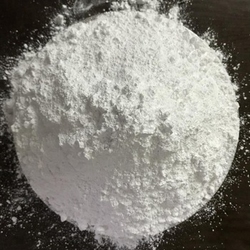How to Prepare a PVC Dry Blend?

Historically, plasticizers have been used to change hard PVC resins into flexible products with a desired softness. The mechanism involves the neutralization, by plasticizer molecules, of the van der Waals forces between the polymer chains. Depending on the degree of softness required, the amount of plasticizer added can vary from approximately 20-120 parts per hundred of resin.
How Does PVC Dry Blend Preparation Work?
In order to permit ease of material handling and further processing, the plasticizer must be completely absorbed by the PVC resin, producing a dry, free flowing powder. This is achieved by heating the resin to approximately 200°F, causing the resin to expand and then absorb the added plasticizer. For highly plasticized blends, normally above 50 PHR, additional time may be required.
What Machines Can be Used for this Preparation?
Since PVC dry blends are usually followed by fluxing devices, such as a double arm mixer or continuous extruder, there is no need for an intense premix dispersion as would be obtained in a B&P Littleford high intensity mixer. Moreover, since cycle times are short in the intensive mixer, there is frequently not sufficient time for through plasticizer absorption in highly plasticized blends.
These highly plasticized dry blends have historically been prepared in large, slow moving ribbon blenders where the initial dispersion and plasticizer absorption take place. While ribbon blenders have been used in this application, they have been found to be inefficient mixing and heat transfer devices. Cycle times are frequently around 45-60 minutes, if color corrections are necessary, an additional 15-20 minutes is needed to insure good dispersion.
B&P Littleford's Advantage
B&P Littleford’s process technology and mixer design present a different concept of PVC dry blend preparation that has proven to be superior to existing processing. The unique mixing action developed in the Littleford intermediate intensity mixer insures a rapid and complete dispersion of all ingredients and sufficient heat transfer. The mix action is developed by the turning of plow shaped mixing tools at a speed sufficient to maintain the material in a pulsating mechanically fluidized bed. This permits an individualization of particles that not only results in rapid and precise mixing, but exposes tremendous particle surface area for exceptionally fast heat transfer. If necessary, the mixer can be equipped with high speed chopping devices for additional de-agglomeration and dispersion of minor ingredients. The mixing cycle in a B&P Littleford mixer, depending on the materials is approximately 15-20 minutes with a few additional minutes for color correction. The mixed and tempered blends are then fed directly to a double arm mixer, pelletizing extruder, or are cooled and stored for further processing.
The B&P Littleford mixer being a horizontal cylinder, eliminates any wet band build up, which often occurs on the straight walls of a ribbon blender and can decrease product quality when leaked into the final batch upon discharge.
The B&P Littleford mixer design has been thoroughly tested in the lab and proven in the field many times. The mixers can be purchased in a variety of sizes to meet most all production needs. B&P Littleford can also assist in supplying fully automated process systems or the interfacing of mixers with existing equipment.
For more information on the relevant machinery we offer mentioned for this process, check out our: Vertical High Intensity, Littleford Plow Mixer, TriVolution Compounder
